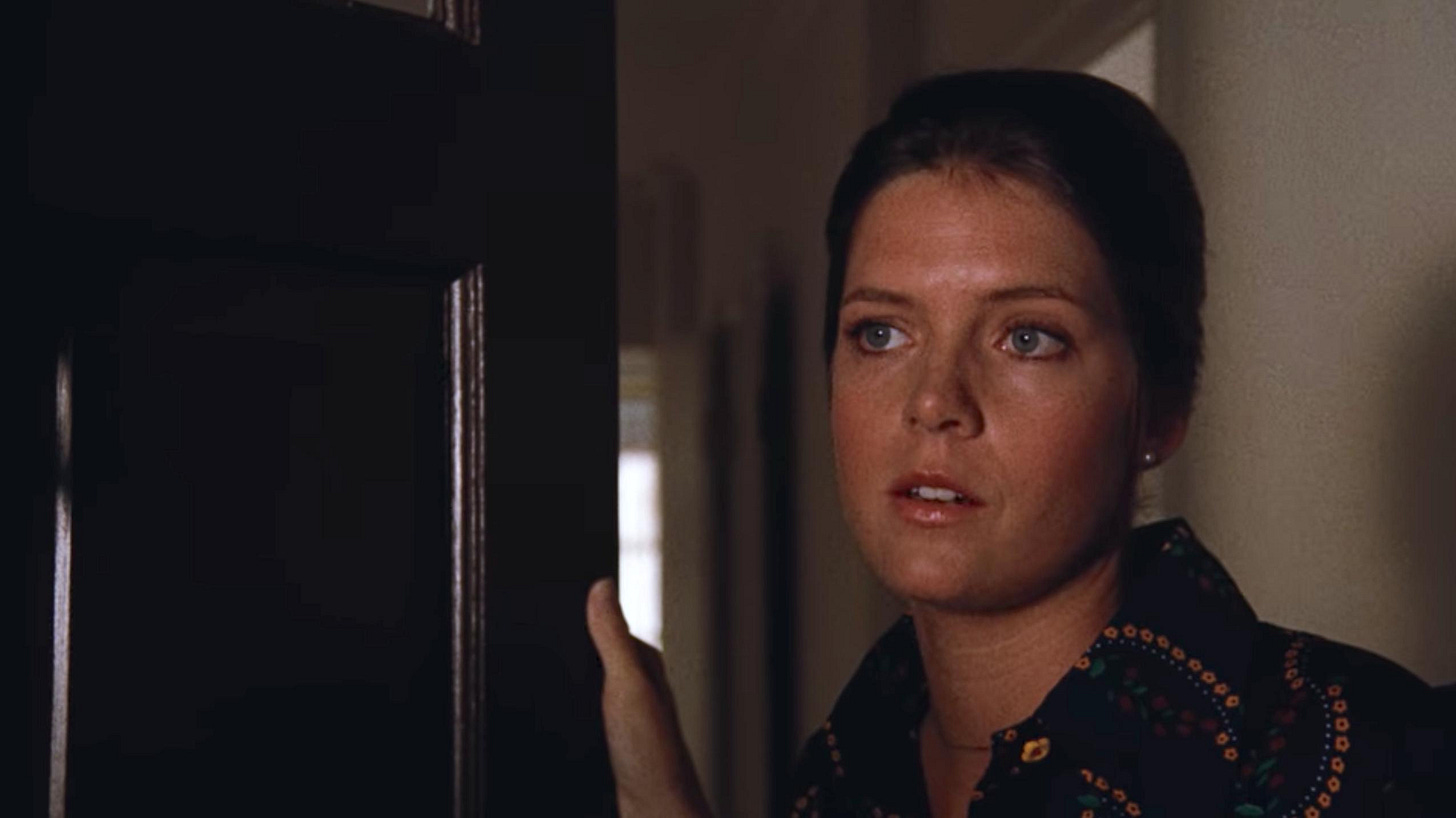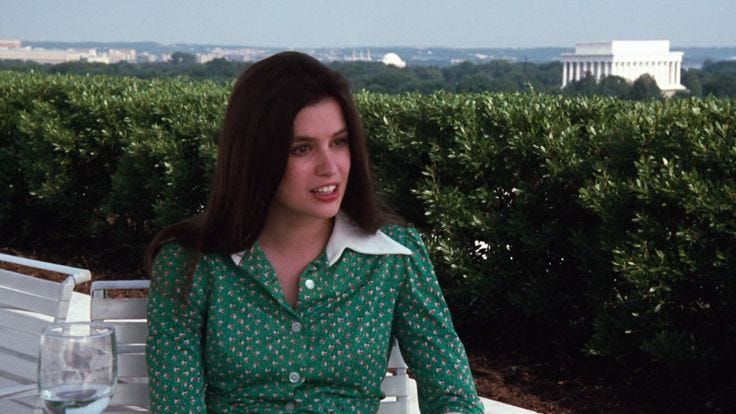Post-Beauty
Are people less attractive than they used to be?
The experience of sitting on the couch cruising Netflix (Disney, whatever) in search of something to watch, only to land on a show or movie you’ve seen a dozen times, is something we all know well. It was in this spirit that I recently rewatched two classics I hadn’t seen for years, All The President’s Men (1976) and Fletch (1985). Both movies stand up in their own way. But what struck me about these two is not their quality but how good-looking so many of the people in them were.
This is a strange thought. I took for granted growing up during the 90s and 2000s that people were better-looking than they used to be - or at least glossier and better groomed, which I understood as amounting to the same thing. This was summarised in Douglas Coupland’s novel Girlfriend in A Coma (1998), in which a character slips into a coma in their early 80s and wakes up in the 90s. At first she is unaware of how much time has passed or that she has unknowingly perceived the world changing around her. She says that while she was asleep she dreamed of a future world that was much like this one, except everyone had amazing hair and perfect teeth.
It’s still kind of true. Anyone who has gone back and watched an early Sean Connery Bond on a modern, hi-definition TV, for example, will know what I mean. He was 33 when he made From Russia with Love, but it’s a rough 33 by contemporary standards. That’s the age (say) Liam Hemsworth is now. Yes, yes, skincare is the only point of comparison where Hemsworth comes off better.
That was the early 1960s. By the late 70s, when “Presidents” was made, things had improved. There are a number of female actors with small parts who are strikingly beautiful in what I can only describe as an “unprocessed” way. The hottest unprocessed snack in All the President’s Men, of course, is Robert Redford, who at the time was in the midst of one of the greatest runs of male hair performance of all time. I mean, look at it!
The same is definitely true of Fletch as far as the female lead goes. My mind cannot accept that anyone ever regarded someone with Chevy Chase's hairline as a sex symbol but he’s a tall and well-built man, and I guess his air of aristocratic anglo entitlement probably helps. Again, the comparison with today highlights the “processing” issue. In Fletch, he has the body of a tanned, athletic guy who takes care of himself. That body type is gradually disappearing from the biggest mainstream movies, where every male lead is required to be a bubbling meat cauldron of steroids even if they’re playing dentist or bus driver or whatever. Some essential qualities of charisma and vitality have been lost in the transition from the former to the latter.
Like all mass production, innovations in celebrity means our culture spits out an ever more regular product, denuded of distinctiveness, and pumped full of all the additives your body craves most but to which your tastes are most deadened. Many good-looking people in movies in 2023 are chicken nuggets - reconstituted, molded, infinitely interchangeable, and not something you could mistake for a natural product.
I’m not the first person to point this change out: a common observation on social media is that this or that actor can’t star in a period piece because they have “Smartphone Face” - i.e. they just look like they know what an iPhone is. The phenomenon is described in this article. The cover picture here (below) is perfectly chosen; you know instantly which of the people in this photo has this problem. This actress is obviously incredibly beautiful by any standards, but it’s the kind of beauty a very sophisticated and successful AI program would spit back at you if asked it to concoct a supermodel or celebrity heiress.
Smartphone face is one thing, a less flattering version of the phenomenon described as “Year Zero” face, where female celebrities of every age are using surgery to look like a monied woman in her mid-thirties who has had a lot of work done. This Guardian talks about “these young girls with that cloned, cougar-like face” and sums it up as follows:
Though traditionally cosmetic surgery has been used to make patients look younger, doctors are noticing a trend for women wanting to simply look "done". Rather than chase youthfulness with a scalpel, some seem to be choosing instead to fix their faces at a certain age (celebrity dermatologist Gervaise Gerstner suggests many women settle for 36) and maintain the look with injectable fillers and cosmetic treatments.
There are two things neither of those articles speak directly to, but which is essential to understanding this phenomenon of numbing aesthetic homogenisation. The first is the secret ubiquity of pornography, which has bled through into non-pornographic culture and helped to create a frenzy for taut faces, glazed eyes and pillowy lips. This has other implications for our culture, but in the interests of not getting myself into trouble I’ll leave those for Mary Harrington to explain.
The other is the issue of obesity in our time, in a way that wasn’t the case 40 or 50 years ago. We know when we look at a beautiful person of that era that they are reflective of the standards of their time in the way that a beautiful person of today is not. That creates a kind of melancholy and dissonance when we compare the two. Not only do you look at an individual actor and think he or she is beautiful - you also think, man, everyone used to look so healthy, what the fuck happened to us?
You can definitely overstate the naturalness of beauty standards in any era, for either sex. Anyone who appears on screen in a Hollywood movie has been selected because they are unusually good looking, have dieted to within an inch of their lives, are caked in make-up and lit in the most flattering way possible. That was true 50 years ago but it is also still true now, and that’s before you add in the filters, digital de-aging and buccal fat removal procedures that are unique to our age. Watching older media can help reveal what a difference those things make, particularly if it’s a show or movie that is both recent, but also from before social media and the forces that accelerate its influence took hold.







there are two Hollywood actors who I consider the peak of male beauty - Cary Grant and Steve McQueen. Grant was very much the semi-aristocratic Anglo-American, refined masculine elegance, and he personified how it is an elegance and panache available to everyone, because he was a poor stowaway from Bristol who made it in Hollywood, a self made man. Well cut suits, jackets, shirts, cardigans, with refinement, a gentleman who sips cocktails of an evening. Steve McQueen represented a certain alpha male elegance and style that didn't really exist before, and hasn't been seen personified as classically since. Very handsome, he helped develop the casual elegant look, slightly preppy, very California, that combined smartness and style without becoming too casual. Mens style has two Houses, the British Savile Row house and the Italian house. Hollywood actors took those houses and Americanised them somewhat, less formalised, quite alive to the outdoors. McQueen was central to that. And he could wear a suit too, as can be seen in The Thomas Crown Affair. He had it all. Somewhere around the 1990s, things fell apart for men and style and elegance, sloppiness and sports wear became the defining characteristic. Its as though Hollywood gave up.
I think there's a lot to this. A lot of modern actors and actresses almost seem to have become parodies of supposedly conventional beauty standards. Someone pointed this out recently about baywatch(I know, I know..)comparing the old Hasslehoff physique to Zach Efron's ludicrously chiseled body. I don't know if hasslehof is objectively more handsome than Efron, but Efron was almost certainly less aesthetically appealing than he would have been if transplanted back 30-40 years to play the role